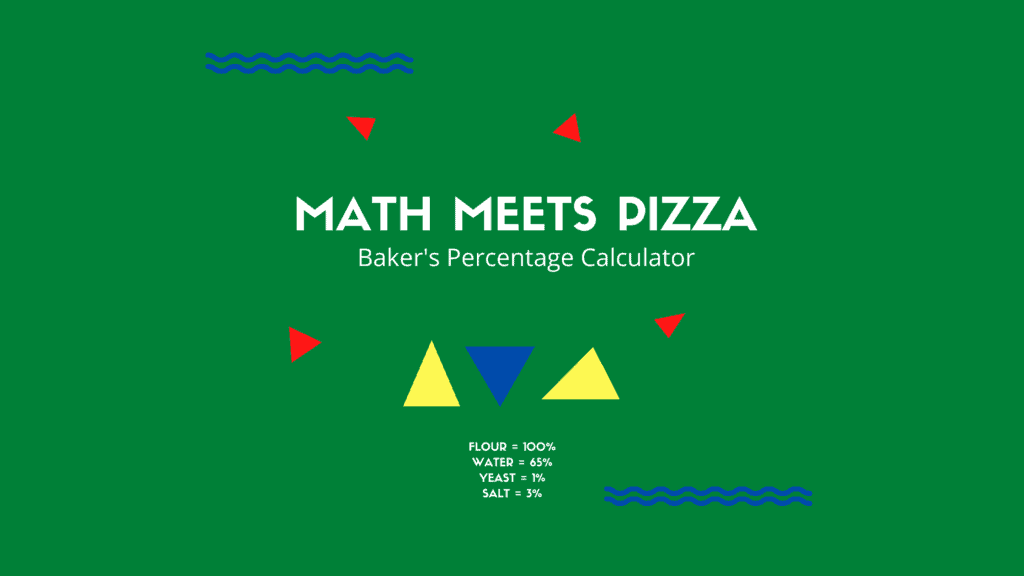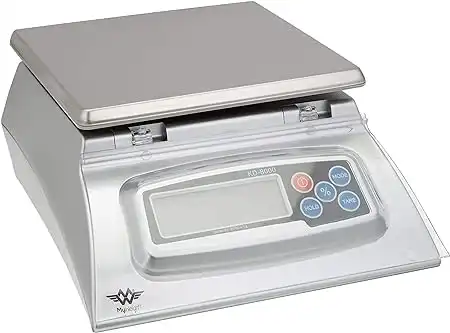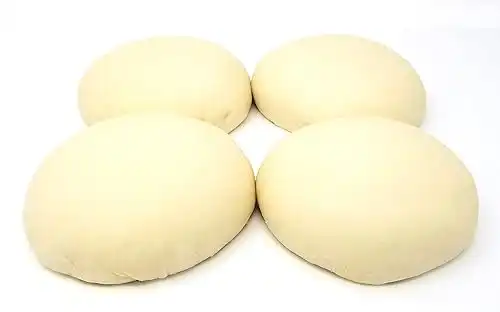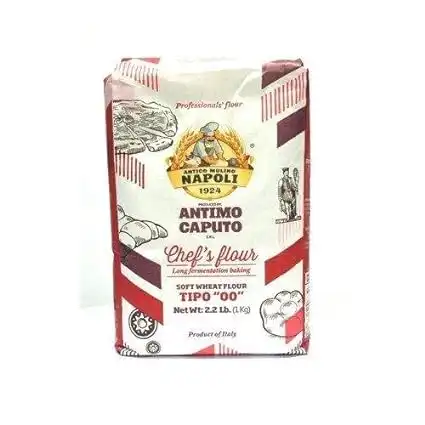Master the art of perfect proportions with our handy Baker’s Percentage Calculator.
This invaluable tool can transform your baking process, ensuring accuracy and consistency in every dough you knead.
Read on to discover how this bakers percentage calculator simplifies scaling recipes and delivers precise measurements for flawless pizza dough every time.
Bakers Percentage Calculator

Baker’s Percentage Calculator
Enter the weight of your ingredients in grams:
What is Baker’s Percentage?
Baker’s Percentage, also known as Baker’s Math or Flour Weight, is a standard method used in baking to denote the quantities of ingredients in a recipe. It’s expressed as a percentage of the total flour weight, always representing 100%.
All other ingredients are then calculated as a proportion of that flour weight. For example, if you have 500g of flour and 350g of water, the water would be 70% of the flour weight, expressed as 70% in Baker’s Percentage.
Why is Using Baker’s Percentage So Beneficial?
Baker’s Percentage offers several key advantages in the baking process.
Firstly, it ensures consistency and precision, which are vital in baking. It allows for easy adjustment of recipe quantities, facilitating the scaling of recipes up or down depending on the required yield.
This is especially useful in professional baking but also for home bakers who want to modify the size of their recipes.
Additionally, Baker’s Percentage provides a clear understanding of the ingredient proportions, giving insights into the characteristics of the dough, like its hydration level.
Ultimately, using Baker’s Percentage enhances control over the baking process and the final product’s quality.
What is a Bakers Percentage Calculator?
A Baker’s Percentage Calculator is a specialized tool designed to make using Baker’s Percentage even easier. Based on your input, it automatically computes the ingredient’s percentages relative to the flour’s weight.
This can be particularly useful when dealing with complex recipes or large quantities, and it eliminates the need for manual calculations, reducing the potential for errors.
How Does a Bakers Percentage Calculator Simplify the Calculation Process?
Using a Baker’s Percentage Calculator can significantly streamline the calculation process. All you have to do is input the weight of each ingredient, and the calculator will instantly provide you with the corresponding percentages based on the flour’s weight.
This can be an enormous time-saver, particularly for large-scale baking or recipe adjustments.
Bakers Percentage Calculator
This Bakers Percentage Calculator for pizza dough will allow you to calculate the baker’s percentage for any given pizza recipe in a few seconds.
It streamlines your pizza-making process by precisely balancing your dough ingredients, leading to consistent, deliciously improved outcomes each time you fire up the oven.
Set the ingredient proportions weight in grams and enjoy your custom baker’s percentage pizza recipe.
Instructions on How to Use This Bakers Percentage Calculator
For example: Let’s say you have a pizza recipe that calls for the following ingredients:
Steps:
In the Grams Column in the center of the chart, enter:
- In the Flour row – Enter weight in grams in the center column. For example, enter 500.
- In the Water row – Enter weight in grams in the center column. For example, enter 350.
- In the Salt row – Enter weight in grams in the center column. For example, enter 10.
- In the Yeast row- Enter weight in grams in the center column. For example, enter 5.
If you want to add any additional ingredients, add the name of the ingredient you want to add in the Ingredient cell where it says “OTHER” and enter the corresponding weight in the center cell – Enter weight in grams.
You will get the result for each desired ingredient in percentages.
Your recipe will look like this:
- Flour 100%
- Water 70%
- Salt 2%
- Yeast 1%
Easy right?
What Does “Flour is Always 100%” Mean in Baker’s Percentage?
In Baker’s Percentage, the flour weight is always represented as 100%, serving as the benchmark against which all other ingredients are measured. This doesn’t mean you use 100% flour and no other ingredients. Instead, it establishes a proportional system where every other ingredient is compared to the weight of the flour.
How are Other Ingredients Expressed in Relation to Flour’s Weight?
Once you’ve established your flour as 100%, you express all other ingredients as a percentage of that weight. For instance, if you’re making pizza dough with 500 grams of flour and 350 grams of water, the water would be represented as 70% (since 350 is 70% of 500).
This relative measurement system helps you understand the balance of ingredients in your recipe.
Why Are Weight Measurements So Crucial in Baking?
Weight measurements are fundamental in baking due to the need for precision and consistency. Unlike cooking, baking is a science that relies on exact proportions of ingredients to achieve the desired chemical reactions.
Using weight measurements instead of volume measurements allows for much greater accuracy. A cup of flour can vary in weight depending on factors like humidity, how tightly it’s packed, or even the type of flour.
But 100 grams of flour is always 100 grams of flour, giving you the certainty needed for successful, consistent baking.
How Do You Calculate Baker’s Percentage? A Step-By-Step Example
The calculation process for Baker’s Percentage involves using the weight of the flour as the base number (always represented as 100%) and expressing each of the other ingredients as a percentage of that weight.
Here’s a simple example:
Let’s say you have a recipe that includes:
- 1000 grams of flour
- 650 grams of water
- 20 grams of yeast
- 20 grams of salt
In this case, the Baker’s Percentage would be calculated as follows:
Flour: 100% (always)
Water: (650/1000) * 100 = 65%
Yeast: (20/1000) * 100 = 2%
Salt: (20/1000) * 100 = 2%
This means your recipe is composed of 65% water, 2% yeast, and 2% salt relative to the weight of the flour.
Why is a Kitchen Scale Your Best Friend in Baking?
Precise measurements are crucial in baking for consistency and success. A small kitchen scale is invaluable when using Baker’s Percentage method.
While volume measurements (like cups and tablespoons) can vary depending on the ingredient’s density and how it’s packed, weight measurements provide higher accuracy.
This is especially important for key ingredients like flour, where a slight variation can significantly impact the texture of your dough.
How Can You Determine the Hydration Level of Your Dough?
The dough’s hydration level is determined by the amount of water in relation to the flour, and it’s a key aspect of understanding the dough’s texture and behavior.
In Baker’s Percentage, hydration is simply the percentage of water.
In our example above, the hydration would be 65%, indicating a moderately wet dough resulting in a crust with a good balance between crunchiness and chewiness. A lower percentage (like 50-60%) would result in a firmer dough, while a higher percentage (70% and above) would create a wetter, stickier dough, often used for rustic, hole-filled breads like ciabatta.
We challenge you to experiment with different hydration percentages to create your own recipe tailored to your taste. You can also try different pizza styles requiring other ingredients and percentages.
Below the chart is a quick reference to the recommended baker’s pizza and dough weights percentages.
Bakers Percentages for Pizza Dough
by Pizza Style
| Ingredient | Neapolitan | NY-Style | Sicilian | Chicago Deep |
|---|---|---|---|---|
| Flour | 100% | 100% | 100% | 100% |
| Water | 65% | 65% | 75% | 60% |
| Yeast | 1% | 1% | 1% | 1% |
| Salt | 2% | 2% | 2% | 2% |
| Oil | – | 5% | 2% | – |
| Sugar | – | 4% | – | – |
| Lard | – | – | – | 4% |
| Malt | – | – | 3% | 2% |
| Butter | 4% | |||
| Cornmeal | 5% |
If you already know your desired total dough weight you’re your preferred hydration percentage and want to know the proportions of ingredients that you need to make your desired pizza(s), check out our Finished Pizza Dough Calculator.
This calculator inverts the process. You enter the desired weight of your dough ball depending on how many pizzas you are making, and it will tell you how many ingredients you need. Super easy!
If you want to learn more about Baker’s Percentage Method, Hydration, Yeast, and Salt, check out the below posts.
Learn More About Baker’s Math with this Ooni Video
Adjusting Pizza Dough Quantities While Maintaining Ratios
Scaling a pizza dough recipe using Baker’s Percentage and a calculator involves proportionally adjusting the quantity of each ingredient. The key is to keep the percentages of the ingredients constant while changing the overall quantity.
For instance, if you want to double your recipe, you would simply double the weight of each ingredient. Using a Baker’s Percentage calculator simplifies this process by automatically adjusting the weights of the ingredients when you input your desired dough quantity.
Practical Examples of Scaling a Pizza Dough Recipe Up and Down
Let’s say your initial recipe is for one pizza, but you want to make dough for four pizzas. You would enter your original recipe into the calculator, then indicate that you want to quadruple the quantity. The calculator will then provide you with the new weights for each ingredient while maintaining the same ratios.
Conversely, if you have a recipe that makes four pizzas but you only want to make one, you would enter your recipe and indicate that you want a quarter of the original quantity. The calculator will then give you the adjusted weights for a single pizza’s worth of dough.
Special Considerations When Scaling Yeast, Salt, and Other Ingredients
While Baker’s Percentage allows you to scale recipes accurately, some ingredients may require additional considerations. Yeast, for instance, might not need to be quadrupled even if you’re quadrupling the rest of the recipe.
Too much yeast can cause the dough to overproof and result in a yeasty flavor. Similarly, salt, which affects both flavor and yeast activity, might need to be adjusted less drastically than other ingredients.
It’s also worth noting that oven times and temperatures might need to be modified when baking larger or smaller quantities of dough.
Always monitor your dough and adjust as needed to achieve the best results.
Troubleshooting Common Issues with the Bakers Percentage Calculator
While using a Bakers Percentage Calculator is generally straightforward, you might encounter some common issues.
For instance, you may find discrepancies if you switch between weight and volume measurements within a single recipe, as these may not translate perfectly. Always stick to one form of measurement for accuracy.
Another common issue might be incorrect total percentage calculation.
Remember, the total percentage does not necessarily add up to 100%; it is based on individual ingredient proportions compared to the flour weight. Always double-check your inputs if the results seem off.
Effective Tips and Tricks for Using the Baker’s Percentage Calculator
Here are a few tips to maximize the Bakers Percentage Calculator’s effectiveness.
Always use a good quality kitchen scale for the most accurate results, as even small ingredient weight discrepancies can significantly alter the outcome. Input the total desired dough weight to scale recipes easily.
Here’s what we recommend:
The My Weigh KD8000 is a versatile Bakers Math Kitchen Scale with a large 8000g capacity and multiple weighing modes, including a percentage weighing function for precise baking. Its stainless steel platform is easy to clean, and the backlit weight display ensures easy reading. The hinged gunk shield adds convenience during messy applications—a must-have tool for accurate and consistent measurements in the kitchen.
Save your favorite recipes. This saves time and ensures consistency.
Finally, always use the hydration calculation feature to determine the dough’s water content, an essential aspect of understanding dough behavior and texture.
The Last Slice
We hope this baker’s percentage calculator for pizza dough helps you in your pizza-making journey. Now you can easily try different percentages and create your very own pizza specialties.
If you want to try something different, we invite you to try our pizza dough calculator, there you can change your pizza style and ingredients percentages and get a copy of your recipe. Check it Out!
If you have any questions or suggestions, please contact us and let us know about your pizza-making process, what you are doing differently, and what other ingredients you are using; we would love to know.
Share our love for pizza with us around the world.
Additional Baker’s Percentage Resources
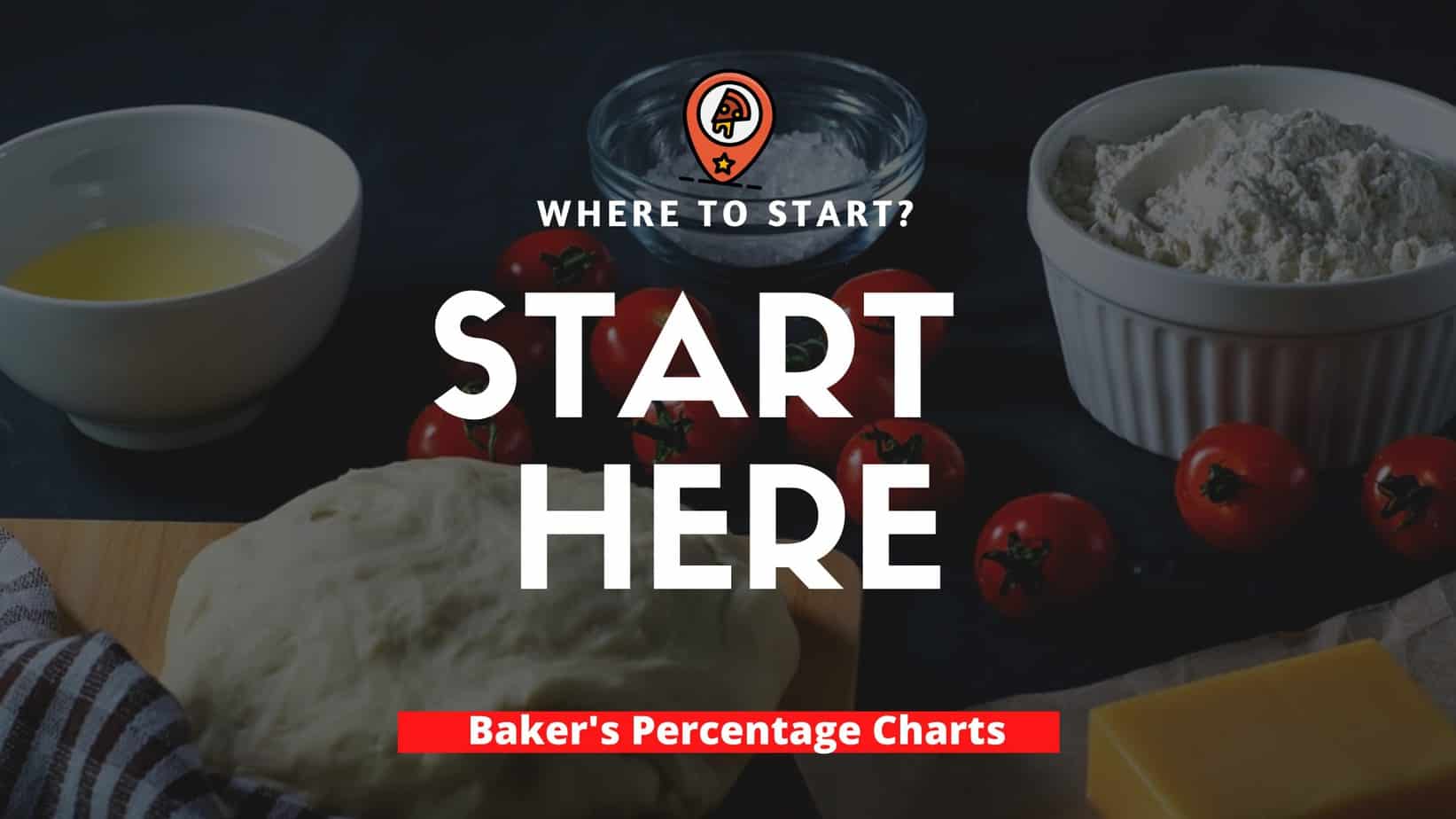
Baker’s Percentage Charts for Pizza Dough: Unlock the Secret Formula for Perfect Pizzas Every Time!
the PROs
This baker’s percentage chart will give you a starting point to develop your own recipe. These are the four main base recipes that can be adapted to any other pizza style.
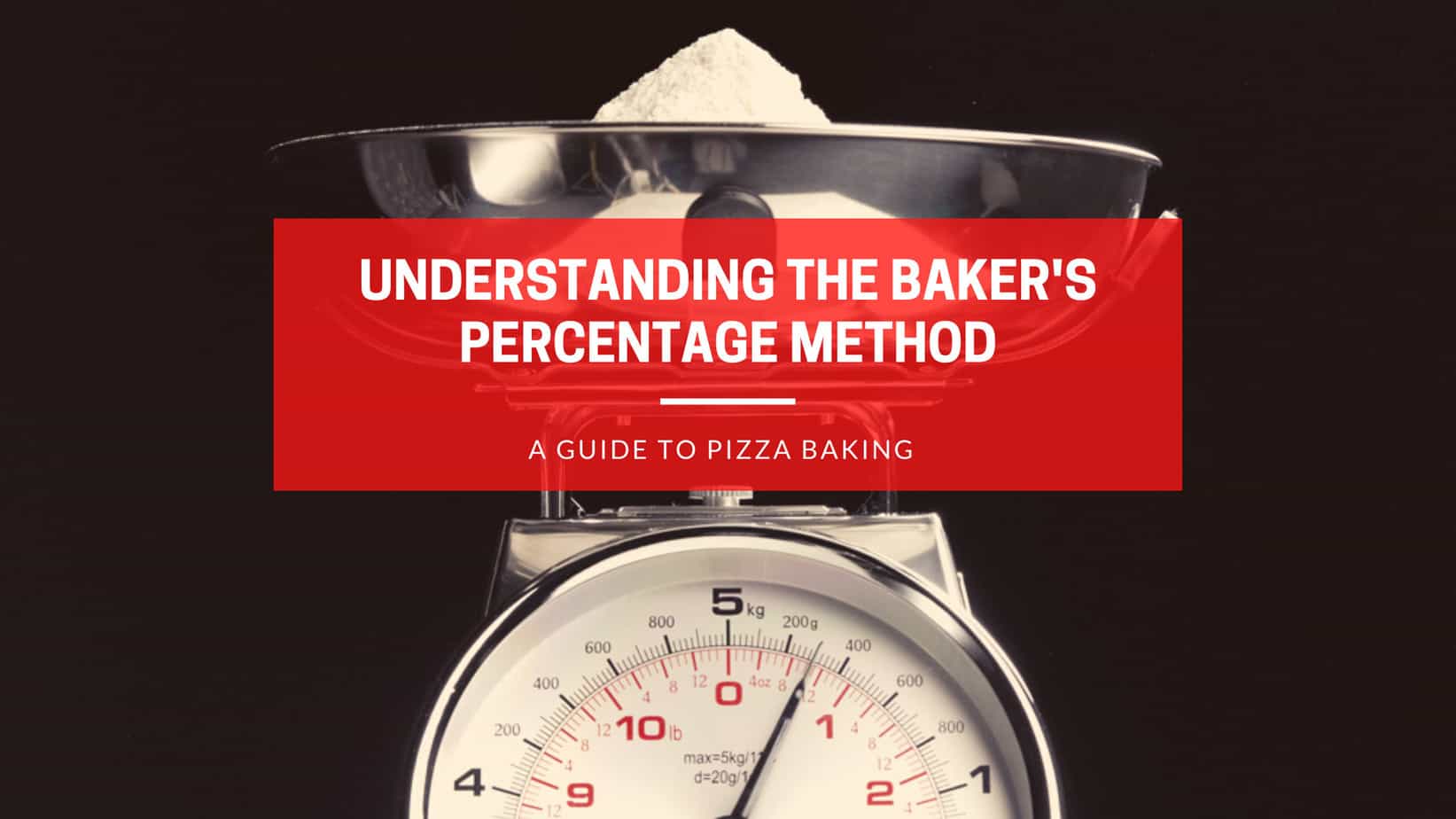
Baker’s Percentage for Pizza: Mastering the Science of Pizza Dough
the PROs
In this article, we are going to uncover the math behind making great pizza at home. At first, it will appear a little intimidating, but don’t worry. Let us do the numbers; the only thing you need is your imagination!

Master the Pizza Making Process Controlling these Powerful Pizza Elements
the PROs
Master the pizza craft with this guide, discover the elements of pizza and become a master pizza baker once you dominate these elements.
Are You Having Trouble Making Pizza Doughballs?
Here’s What You Can Do
We love that you can now buy fresh pizza dough balls straight from New York City. The perfect size for a medium pizza. They will ship frozen, just thaw and make the most wonderful pizza in minutes.
New York Pizza is different. The crust is completely unique. Airy, Crispy, and a taste that can’t be duplicated. Dairy-Free - Soy Free. Pizza Dough is made fresh and frozen only for transportation. All-Natural ingredients - Flour, Water, Olive Oil, Salt, Sugar and Yeast
Price includes Express Shipping. 1 Doughball creates a 12 to 14-inch pie depending on how thick you like the crust.
Complete instructions with each order. Taste the difference New York Water makes!

Homemade Pizza FAQs
How to Start Making Pizza?
Making pizza at home is actually very simple, and anyone can do it. If you don’t have a mixer, you can still make the dough by hand.
Check our guide on How to Get Started to begin your pizza-making journey.
Do I need a pizza oven to make pizza at home?
No, you can make pizza in a regular kitchen oven, and these days you can even make pizza on your stove or your grill.
Check our Recommended Oven Section for the oven that best suits your needs.
What is the best flour for pizza?
The best flour for pizza is flour which contains a high-protein content. Of course, it will depend on the kind of oven you have.
Regarding the brand, we’ve found that Caputo Chef’s Flour works best for home ovens, while Caputo Pizzeria works best for high-temperature ovens.
Check the Best Flour for Pizza article to learn more about flour and why we think Caputo is best.
How long should I bake pizza?
The time to cook your pizza will depend on the kind of pizza you are making and the kind of oven you have.
The lower the temperature, the longer will take to cook your pizza. On average, it will take 12 to 15 min to cook pizza in a 500F oven.
For details on specific cooking times and temperatures, check the Guide to Oven Temperature and Cooking Time article.
What kind of yeast should I use for pizza?
To make pizza dough, you can use any yeast you have available. You can use fresh, instant, or active dry yeast.
The amount of yeast to use will vary depending on which one you use.
We found that active dry yeast gives the best results. To find out why we think is best to check Yeast: Here is What You Need to Know article.
What is the best hydration percentage?
On average, water should be 65% of the total weight of flour. For example, if your recipe calls for 500g of flour, you should add 325g of water (500 x .65 = 325).
Of course, the temperature of the oven will also have an impact on your final result.
Check our guidelines and our Baker’s Percentage Charts for the best results.
For more pizza questions, check our Pizza FAQs Page or Contact Us.
Additional Resources
If you want to calculate more, don’t forget to check Our Homemade Pizza Dough Calculator.
You can choose your pizza style, enter the desired percentages, and download your recipe.

Check Amazon’s Pizza-Making Must-Haves
Why have two pizza peels when you can only have one. This pizza peel surpasses the benefits of wood peels with the convenience of a metal peel. It's made entirely from anodized aluminum for a lightweight design that's incredibly durable, too. It's designed to be used frequently in high-heat pizza ovens.
The Etekcity Lasergrip 800 Digital Infrared Thermometer is a versatile and reliable tool for accurate temperature measurements. Its non-contact design allows you to measure temperatures from a distance, making it safe and hygienic for various applications. With a wide temperature range of -58°F to 1382°F (-50°C to 750°C), this infrared thermometer is perfect for both everyday cooking needs and professional uses.
The built-in laser pointer helps you target the specific area you want to measure, ensuring precision and consistency. Whether you're grilling, cooking, or performing household maintenance, the Etekcity Lasergrip 800 provides fast and accurate temperature readings with ease.
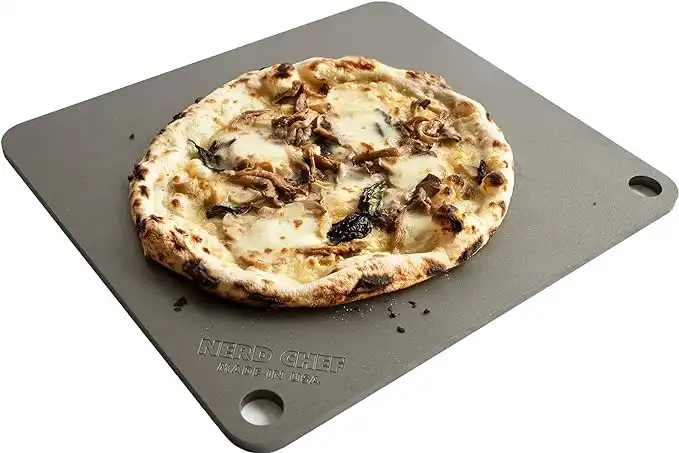 NerdChef Steel Stone
NerdChef Steel Stone
Making great crusts traditionally requires a 700-1000F wood-fired oven. Nerdchef Steel Stone replicates that performance in a home oven with its super-high heat transfer ability - transferring heat energy 20 times faster than ceramic. It creates beautiful and crispier crusts, gorgeous blistering throughout, and it cooks faster.
The Chef's flour is a general-purpose, high gluten flour that works well for many recipes. "Tipo 00" refers to how refined the flour is. Chef's Flour is best for those who want to bake in their traditional home oven up to 500 degrees Fahrenheit!
Enjoy!
Not a PRO? Not a Problem!
Take a pizza class to bring your pizza skills to the next level,
so you can be a PRO!
Related Posts

Costco Pizza Delivery: Find How You Can Get It Now!
the PROs
People go to Costco’s food court for many different reasons, but the cheesy slice of pizza they serve is among …

Pizza for Beginners: Don’t Buy Pizza, Make It! Here’s How to Get Started!
the PROs
You have this idea that you want to make pizza at home as opposed to ordering it, but where do you start? Don’t worry! Here you will find answers and directions to all your questions.

Pizza Toppings Under Cheese or Over Cheese? [Why the Order Matters]
the PROs
Is Pizza Cheese on Top or Bottom? Hey pizza lovers, are you wondering if you should layer pizza toppings under …
Newsletter
Subscribe to our Recipe of the Week newsletter and receive our partners’ latest recipes, tips, and discount offers.
Keep in Touch!
